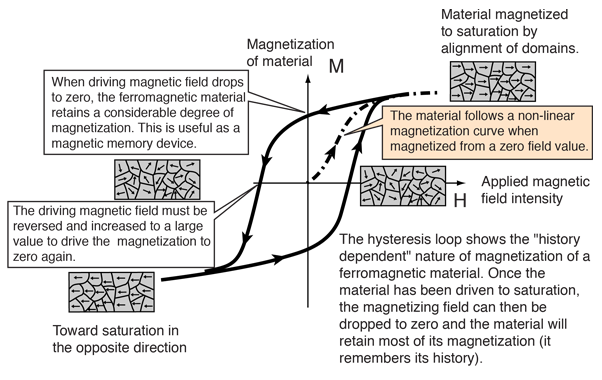Variations in Hysteresis Curves
There is considerable variation in the hysteresis of different magnetic materials.

The curve on the left above represents materials which are sometimes called magnetically "hard". This includes various steel alloys and special alloys such as Alnico. If magnetized near saturation, such materials may retain a magnetic field as high as B = 1 Tesla, corresponding to an internal magnetization M = B/μ0 of about 800,000 A/m.
The curve on the right represents magnetically "soft" materials such as soft iron which are used for transformer and motor cores. They minimize the energy loss and heating associated with periodically reversing the magnetic field in AC electrical applications.
|


